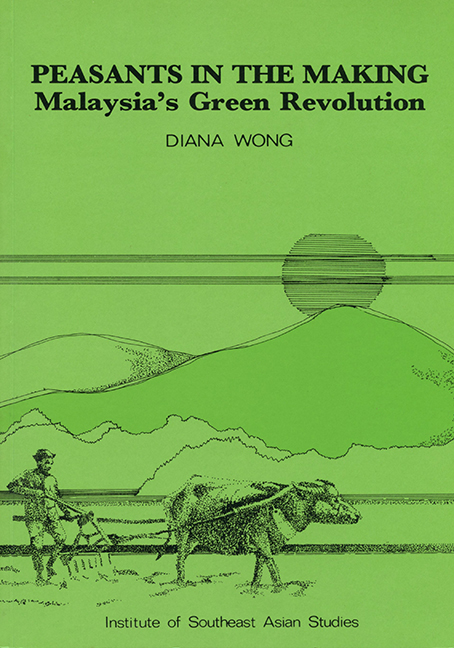Book contents
- Frontmatter
- Contents
- Acknowledgements
- Part I The Framing of the Study
- Part II The Anatomy of the Village
- Part III The Transformation of the Village Economy
- Chapter 7 The Production Cycle and the Division of Labour
- Chapter 8 Landownership and Land Tenure
- Chapter 9 Rural Indebtedness and the Marketing of Padi
- Chapter 10 Patterns of Change in the Non-Padi Economy
- Part IV The Transformation of Village Society: The Unfolding of Social Differentiation
- Part V Conclusion
- Appendix I Research Methodology
- Appendix II Questionnaire
- Bibliography
- THE AUTHOR
Chapter 8 - Landownership and Land Tenure
from Part III - The Transformation of the Village Economy
Published online by Cambridge University Press: 21 October 2015
- Frontmatter
- Contents
- Acknowledgements
- Part I The Framing of the Study
- Part II The Anatomy of the Village
- Part III The Transformation of the Village Economy
- Chapter 7 The Production Cycle and the Division of Labour
- Chapter 8 Landownership and Land Tenure
- Chapter 9 Rural Indebtedness and the Marketing of Padi
- Chapter 10 Patterns of Change in the Non-Padi Economy
- Part IV The Transformation of Village Society: The Unfolding of Social Differentiation
- Part V Conclusion
- Appendix I Research Methodology
- Appendix II Questionnaire
- Bibliography
- THE AUTHOR
Summary
INTRODUCTION
The picture of the village households painted in the preceding chapters shows them strongly anchored in the padi economy but by no means confined to it. Forces external to the village padi economy impinge significantly on the access to income and thus on the process of differentiation within the village. Landed property by itself would therefore have been an inadequate indicator for the understanding of the social structure of the village. On the other hand, the quantitative as well as strategic importance of the padi economy cannot be denied. This leaves us with the question of the distribution of access to land, one of the most crucial factors of production in padi cultivation. When questioned, the most serious problem voiced by the villagers was “land scarcity”. Data presented in Chapter 4 indicates however, that the problem for the village household is of an inadequate access to land rather than of absolute landlessness. Less than ten village households were wholly dependent on wage labour; the rest farmed padi, cither on rented or owned land. Only one villager farmed slightly more than 20 re, the bulk of which was on rented land.
A similar pattern in the distribution of farm size can be found in the Muda region as a whole. As can be seen from Fig. 8.1 the average farm size is 4 acres, with the bulk of the farmers operating less than 2.7 acres. Those farming 14.2 acres and above accounted for a mere 2 per cent of the farmers. 37 per cent are owner-operators, 28 per cent are owner-tenants and 35 per cent are tenants, including 8 per cent farm labourers. Furthermore, tenancy is largely between kin, with 71 per cent of tenancy agreements between close relatives.
Drawing from the experience of other agrarian societies which have been subjected to similar pressures of intensive commercialization and land scarcity, one could have expected a much more skewed pattern of access to land: a high degree of land concentration with a resultant pool of available wage labour from landless families.
- Type
- Chapter
- Information
- Peasants in the MakingMalaysia's Green Revolution, pp. 128 - 144Publisher: ISEAS–Yusof Ishak InstitutePrint publication year: 1987



